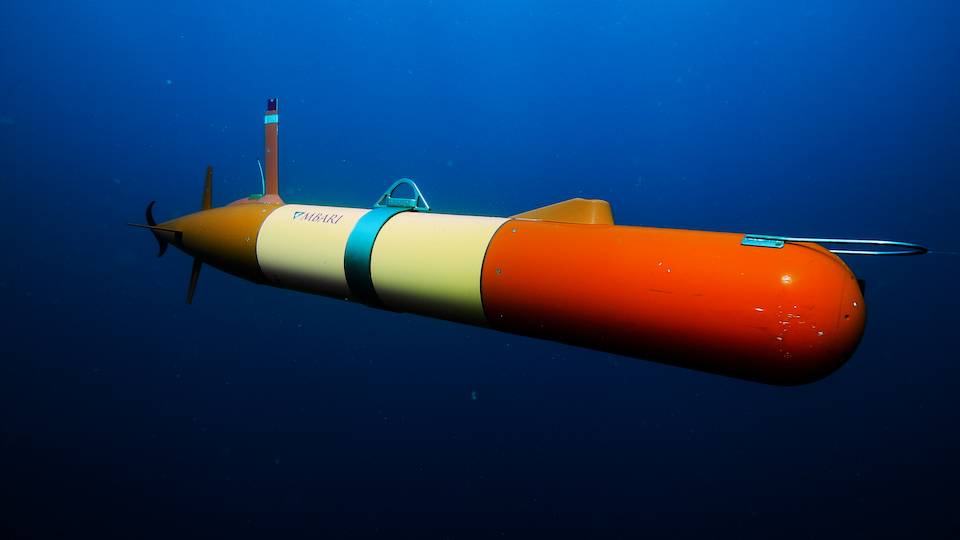MOSS LANDING — The Monterey Bay is now home to robotic lab assistants which collect aquatic DNA for researchers to analyze onshore.
Researchers at the Monterey Bay Aquarium Research Institute and the National Oceanic and Atmospheric Administration have developed a new underwater robot that collects samples of DNA floating around in the ocean. That DNA could help researchers understand the animals, plants and microbes that teem in the Monterey Bay and the ocean beyond.
“We’re finding new ways to reach these ocean ecosystems and understand how everything from microbes up to whales is responding to changes in the environment,” said Kobun Truelove, an oceanographer at MBARI who led the team.
Living creatures often leave behind traces of DNA in their environment, which scientists can use to track them. The process is a lot like using forensic science to determine who was at a crime scene. “We’re extracting DNA, and then we’re matching it against this bank of suspects that we have,” said Francisco Chavez, a researcher at MBARI who worked on the project.

Just like criminal databases, the list of aquatic suspects is incomplete. Scientists know how to recognize the DNA sequences for many of the usual suspects, like anchovies and krill. If those creatures have recently visited an area, they’ll come back as hits from that list of known DNA sequences. But many ocean species haven’t made it into the database yet. “Every day we discover that some of the sequences that we get, we don’t know what they are because nobody has actually sequenced that organism,” Chavez said.
Researchers have been using environmental DNA to study the ocean for years. But before, they had to go out on a ship to collect samples. This made it tricky to reach deep marine crannies or to hang out and collect DNA for long periods. And it’s expensive to send a ship out for each and every ocean mystery.
That’s where this new robot comes in. They can be launched from a small boat just offshore or even a dock and they have enough juice to make it from Monterey to Hawaii. It can collect and preserve dozens of DNA samples and bring them back to researchers for further analysis.
Monterey’s abundance of ocean creatures and mysterious depths make it an excellent testing ground for this technology. “We’re very fortunate to have something that’s the size of the Grand Canyon but underwater pretty much right on our doorstep,” Truelove said. “It creates this kind of very beautiful and mysterious realm that is still poorly understood on a lot of levels.”
The Monterey Bay is already home to a marine microphone that records the sounds of ocean creatures — Truelove calls it an “underwater fish finder.” That microphone has caught “beautiful streaks of organisms coming to the surface at night,” Chavez said. But researchers can’t tell exactly which creatures participate in that migration just from their sounds. This new robot can follow that nightly migration and help researchers identify its participants.
This technology will also make it easier to track the health of Monterey Bay. The robots could identify and monitor toxic algal blooms that sometimes arise. And they could help scientists track endangered species and keep an eye out for invasive species as the bay changes over time. “Ocean temperatures are warming,” Truelove said. “How’s that going to change the cast of characters that are coming into the Monterey Bay?”
But these robots will help researchers understand the ocean beyond the Monterey Bay as well. “One of the missions here is to try to work to make sure that that technology is transferred to folks,” Chavez said.
The researchers are also hoping to streamline the process. Right now, the robot collects DNA samples and brings them back to a landlubberly lab for sequencing. In the future, the team hopes to equip the drone with all the equipment it needs to sequence the DNA it collects and beam its findings back to land.
Chavez is excited for the robots to help understand and appreciate life in the ocean. “The ocean is sometimes out of sight, out of mind — you just see the surface of it,” he said. “This new capability will shed light on what is happening in the ocean, not only here in Monterey, but at larger scales.”










